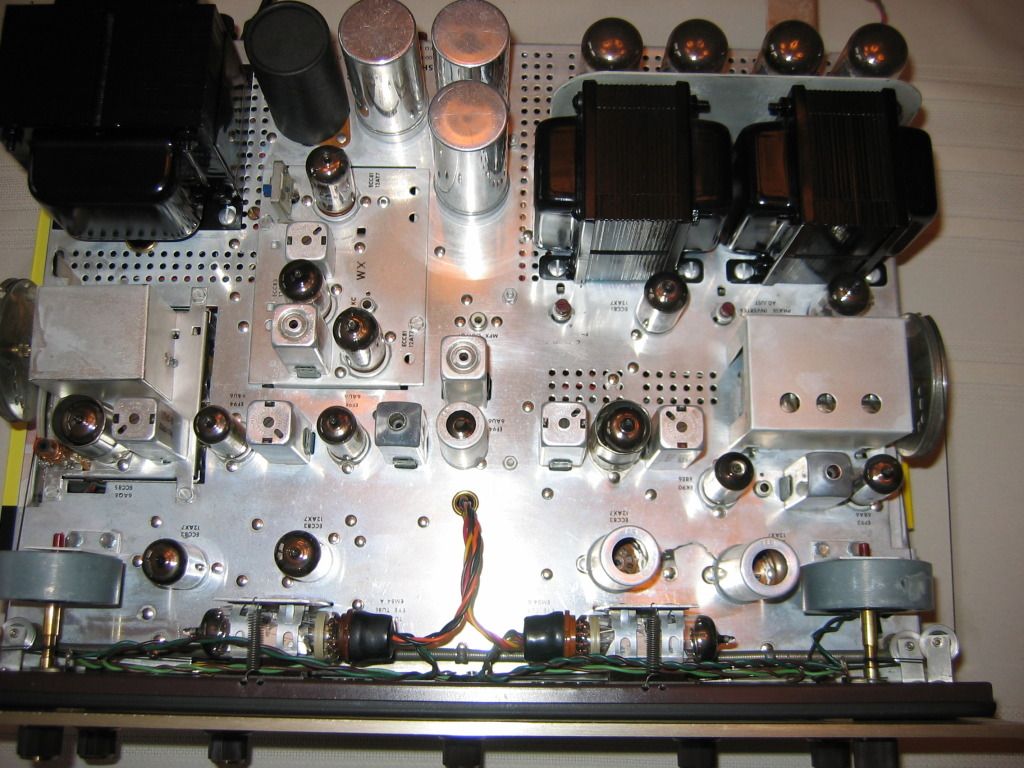You need to anchor and mass-load the enclosure. Your LF drivers are overpowering the original cabinet design, which was never designed for that kind of response.
This will also help reduce cabinet resonances, which I'm sure are excessive. Resonances reduce and muddy bass response, among other bad things.
Rubber feet may keep the enclosures from walking, but it may not control the cabinet resonances.
Unless the floor is concrete, you don't want the cabinets too firmly bonded to the floors, or you will just be transmitting the cabinet resonance everywhere else.
Unless the floors are concrete, I would suggest spikes to start. If you have sensitive floor coverings, you can place them on nickles to protect them.
As far as mass loading, the quickest and easiest way is to stack weight on top of the cabinets. I've seen books, bricks and even cinder blocks used for this purpose. You can also directly fasten the cabinet (with screws or bolts) to a high mass/higher density object sitting on the floor (one example: a sand-filled platform/box). Or you can do both.
This will reduce, but not eliminate cabinet resonances. It's hard to fix a suboptimal front baffle or unbraced joints. Higher quality speakers will have all sorts of internal bracing and chambers to address these issues, most of which are usually lacking below a certain price point. Big, cheap floorstanders with megawide woofers are usually the prime examples.
There are some other tricks to reduce resonances, but they involve getting into the cabinets, so I would start with the above.
This will also help reduce cabinet resonances, which I'm sure are excessive. Resonances reduce and muddy bass response, among other bad things.
Rubber feet may keep the enclosures from walking, but it may not control the cabinet resonances.
Unless the floor is concrete, you don't want the cabinets too firmly bonded to the floors, or you will just be transmitting the cabinet resonance everywhere else.
Unless the floors are concrete, I would suggest spikes to start. If you have sensitive floor coverings, you can place them on nickles to protect them.
As far as mass loading, the quickest and easiest way is to stack weight on top of the cabinets. I've seen books, bricks and even cinder blocks used for this purpose. You can also directly fasten the cabinet (with screws or bolts) to a high mass/higher density object sitting on the floor (one example: a sand-filled platform/box). Or you can do both.
This will reduce, but not eliminate cabinet resonances. It's hard to fix a suboptimal front baffle or unbraced joints. Higher quality speakers will have all sorts of internal bracing and chambers to address these issues, most of which are usually lacking below a certain price point. Big, cheap floorstanders with megawide woofers are usually the prime examples.
There are some other tricks to reduce resonances, but they involve getting into the cabinets, so I would start with the above.















